Solaris Bus & Coach
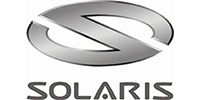
Visiting address
ul. Obornicka 46
62-005
Owińska
Postal address
ul. Obornicka 46
Owińska , 62-005
Contact person
Dariusz DługaszekJoin our community for FREE today!
Create and share your own profile
Join the discussions
Publish your own items
Subscription to our Weekly eNewsletter
Get connected with Mass Transit Professionals Worldwide
FREE membership benefits
- * create and share your own profile
- * join the discussions
- * publish your own items on Mass Transit Networkmanage news, jobs, tenders, companies, events, showcases, educations, associations and literature.
- * subscribe to our eNewsletter
Company information
Solaris Bus & Coach

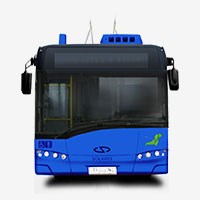
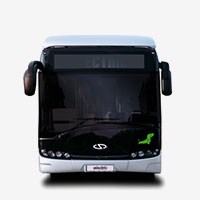
Solaris Bus & Coach is a family company founded and owned by Solange and Krzysztof Olszewski. The company is a major European producer of city, intercity and special-purpose buses as well as low-floor trams. Since the start of production in 1996, over 10 000 vehicles have already left the factory in Bolechowo near Poznań. They are running in 28 countries.
The combination of the vision and experience of Solaris’ owners with the enthusiasm of a young team resulted in perfect conditions to achieve strong successes.
Despite its young age, Solaris has become one of the trendsetting companies in its industry. For many years it has been the indisputable leader among the suppliers of city buses in Poland as well as one of the largest suppliers of buses in Germany.
Company information
62-005 Owińska
Poland
Solutions
- Roadbound Vehicles for Public Transportation
Product information
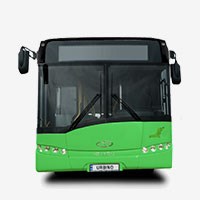 Urbino
Urbino
Urbino low-floor buses are a composition of stylish design, reliable and practical solutions and the guarantee of safety and eco-friendliness. Their unique look is defined by the characteristic curved windscreen. Not only is this a distinctive design element, but it also gives the driver better visibility of the nearside kerb, increasing the safety of passengers waiting at the bus stop. Over the past ten years, Urbino buses have become an integral part of the cityscape of major towns and cities throughout Europe and beyond. Urbino buses are modern and durable, yet very easy to use, operate and maintain.
Urbino Low Entry
 The Urbino LE family combines the advantages of low- and high-floor buses. The low floor at the front and in the middle of the bus ensures that passengers have easy access, while the high floor in the rear means all seats are facing forward. This means Solaris low entry buses are not only suited to urban operation, but perform equally well as suburban or intercity buses.
The Urbino LE family combines the advantages of low- and high-floor buses. The low floor at the front and in the middle of the bus ensures that passengers have easy access, while the high floor in the rear means all seats are facing forward. This means Solaris low entry buses are not only suited to urban operation, but perform equally well as suburban or intercity buses.
Apart from Urbino 10.9, 12 and 15 LE buses, the Low Entry product group also includes the Alpino 8.9 as well as Urbino 12 and 15 powered by compressed natural gas. This gas drive allows gaseous pollutants to be reduced by 85% and particulate matter by almost 100% when compared to conventional engines. Therefore the Urbino LE CNG meets the most stringent environmental standards.
Urbino Electric
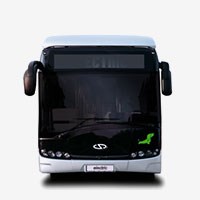 Exceptionally quiet, emission-free, distinguished by its modern design and guaranteeing low operation costs - discover the benefits of the Solaris Urbino electric. The first version was designed and built on the basis of the Solaris Alpino 8.9 LE low-entry midibus. The fully low-floor twelve-metre version uses the well-proven Solaris Urbino 12 as a basis, while its drive technology already benefits from experience gained during tests of the shorter model. Solaris offers also articulated electric buses: Urbino 18 electric and Urbino 18.75 electric.
Exceptionally quiet, emission-free, distinguished by its modern design and guaranteeing low operation costs - discover the benefits of the Solaris Urbino electric. The first version was designed and built on the basis of the Solaris Alpino 8.9 LE low-entry midibus. The fully low-floor twelve-metre version uses the well-proven Solaris Urbino 12 as a basis, while its drive technology already benefits from experience gained during tests of the shorter model. Solaris offers also articulated electric buses: Urbino 18 electric and Urbino 18.75 electric.
While a member of the Urbino family, the Solaris Urbino electric differs from its combustion-engined counterparts in several features beyond the drive technology, ranging from its attractive exterior and interior styling to a series of innovative and cuttingedge design solutions.
The configuration of the drive technology of the Urbino electric, can be exactly matched to their operators’ requirements. This is made possible by the flexible design of the system’s components, which allows them to be selected and scaled according to the demands of the routes the buses will be used on. Based on a route profile supplied by the operator, Solaris’s engineers determine the right choice of technology. Engine power rating, size and capacity of batteries as well as different charging solutions can all be specified. The result is an Urbino electric that is perfectly suited to the expectations of its operator, tailored to its route profile and offers huge operational possibilities. Additionally, the careful selection of components and parametres reduces the purchase cost of the vehicle by cutting out on surplus features not required by a particular operator.
At the heart of the drive system of the Urbino electric are a fourpole, asynchronous traction motor and lithium-ion batteries. Their power and capacity can be adapted to the route on which the bus is to be used. The batteries are not only the source of energy for the motor, but they also feed all auxiliary systems, including air-conditioning and heating, steering pump and the electrically-powered doors. Components conventionally fed by compressors powered by the diesel engine have been replaced with electric counterparts. These innovations, along with the choice of charging solutions, enable an operational performance that can be equal to that of conventionally powered buses, but at lower operating costs. Additionally, Solaris’s electric bus is a gain for the environment and significantly contributes to better air quality and living standards in our cities.
Solaris offers four different charging solutions for the Urbino electric. These allow the bus to be adapted to the infrastructure that operators have or may install. The first solution is a plug-in connection. Energy can be supplied through external chargers. Secondly, inductive charging is available for Solaris Urbino electric buses. Under the bus, a dedicated pick-up coil is fitted, which receives energy from inductive coils mounted under the surface of the road at termini or bus stops along the route.
Like inductive charging, Solaris’s next solution is an automatic system that does not require drivers to leave their cab. This is a roof-mounted solution, which automatically connects to charging stations at the end of the line or at bus stops. After a short but powerful recharge, the batteries will be sufficiently topped up for the bus to continue to the next charging point, thus enabling all-day operation without range restrictions.
Fourth charging system is fuell cells. The batteries remain the main energy provider to the drive system and are charged by the fuel cells during operation. It makes the electric bus similarly efficient as diesel buses. Battery charging cycles are pre-programmed. The bus is fuelled with hydrogen once a day in the depot. It is ready to cover 300 km per day.
The parameters and solutions adopted in the construction of the Urbino electric are a combination of state-of-the-art technology and design that pay particular attention to the environment. The bus is fitted with energy-saving LED lights. This technology has been used both for exterior and interior lighting. In the Solaris Urbino electric, driver have a dashboard equipped with touch-screen panels at their disposal, which in addition to the basic parameters display information about the state of the electric system and the battery charge level. Integrated into the touch screens are controls for the heating and other vehicle functions. This intuitive and easy-to-use system allows drivers to concentrate on driving without distractions.
Urbino Hybrid
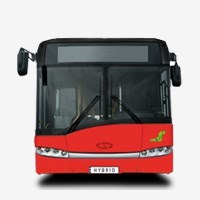 Solaris Urbino hybrid buses offer an innovative approach to environmental care. These vehicles, powered by a drive which is a combination of a combustion engine and an electric engine, are designed for the most demanding city bus operators. With their emission-reducing solutions, Solaris Urbino Hybrid buses significantly increase the standard of living in the city. Within the framework of drive system constant development and experience in constructing electric vehicles, Solaris creates a hybrid buses in accordance with the specific requirements of the carriers. Their technical specification depends on the chosen equipment and allows the use of different options for energy storage, diesel generators and energy management.
Solaris Urbino hybrid buses offer an innovative approach to environmental care. These vehicles, powered by a drive which is a combination of a combustion engine and an electric engine, are designed for the most demanding city bus operators. With their emission-reducing solutions, Solaris Urbino Hybrid buses significantly increase the standard of living in the city. Within the framework of drive system constant development and experience in constructing electric vehicles, Solaris creates a hybrid buses in accordance with the specific requirements of the carriers. Their technical specification depends on the chosen equipment and allows the use of different options for energy storage, diesel generators and energy management.
Trollino
 A clean and quiet city is the dream of many of its inhabitants. Urban authorities aim to reduce emissions of noise and exhaust gases to ensure better living conditions for their residents. In taking care of the environment, which significantly influences the quality of life, cties re-introduce trolleybuses as a proven solution. With its low-floor Trollino in 12, 15 and 18 meter versions, Solaris fulfils the vision of a friendly city. These vehicles, powered with electricity, offer a higher comfort than traditional city buses, ensuring a quiet, clean and friendly urban environment. It has to be noted that the 15 meter Solaris trolleybus was the first vehicle of that type in the world.
A clean and quiet city is the dream of many of its inhabitants. Urban authorities aim to reduce emissions of noise and exhaust gases to ensure better living conditions for their residents. In taking care of the environment, which significantly influences the quality of life, cties re-introduce trolleybuses as a proven solution. With its low-floor Trollino in 12, 15 and 18 meter versions, Solaris fulfils the vision of a friendly city. These vehicles, powered with electricity, offer a higher comfort than traditional city buses, ensuring a quiet, clean and friendly urban environment. It has to be noted that the 15 meter Solaris trolleybus was the first vehicle of that type in the world.
InterUrbino
 The Solaris InterUrbino was designed for intercity bus operation. Its universal design combines the best solutions of Solaris’ city buses with features more commonly found on coaches. As a result this bus is perfect for both shorter and longer routes. The InterUrbino can also be adapted for use as a school bus. Comfortable seats with reclining backrests, adjustable armrests and spacious, aesthetic luggage racks above the seats provide comfort for passengers. InterUrbino is available in two lengths: 12 and 12.8 metres. Three powertrain options are available. The driver’s cab has been designed with equal care. The major determinant was functionality: controls and switches are carefully arranged to ensure that the operation of the InterUrbino is almost intuitive. All these aspects are to ensure a comfortable, and above all safe, journey for both driver and passengers.
The Solaris InterUrbino was designed for intercity bus operation. Its universal design combines the best solutions of Solaris’ city buses with features more commonly found on coaches. As a result this bus is perfect for both shorter and longer routes. The InterUrbino can also be adapted for use as a school bus. Comfortable seats with reclining backrests, adjustable armrests and spacious, aesthetic luggage racks above the seats provide comfort for passengers. InterUrbino is available in two lengths: 12 and 12.8 metres. Three powertrain options are available. The driver’s cab has been designed with equal care. The major determinant was functionality: controls and switches are carefully arranged to ensure that the operation of the InterUrbino is almost intuitive. All these aspects are to ensure a comfortable, and above all safe, journey for both driver and passengers.
Tramino
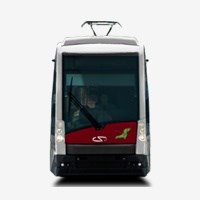 Solaris produces both multiarticulated and GTx trams. The Tramino Poznań is an example of the former type of vehicles, while Olsztyn, Jena and Braunschweig represent the latter. In these GTx trams, every body section runs on its own bogie. In 2012, Solaris delivered 22 Solaris Tramino to Poznań City Transport. It was the second part of the delivery of 45 vehicles ordered by the local operator. Poznań is not the only Polish city to have ordered Solaris trams. Olsztyn, the capital of the Warmian-Masurian Voivodeship, signed a contract for the delivery of 15 bi-directional, 29-metre long vehicles. They will have six sets of double doors on each side, providing easy and comfortable access to the completely low floor throughout the tram. Fitted with 36 seats, these vehicles will be able to accommodate more than 230 passengers in total.
Solaris produces both multiarticulated and GTx trams. The Tramino Poznań is an example of the former type of vehicles, while Olsztyn, Jena and Braunschweig represent the latter. In these GTx trams, every body section runs on its own bogie. In 2012, Solaris delivered 22 Solaris Tramino to Poznań City Transport. It was the second part of the delivery of 45 vehicles ordered by the local operator. Poznań is not the only Polish city to have ordered Solaris trams. Olsztyn, the capital of the Warmian-Masurian Voivodeship, signed a contract for the delivery of 15 bi-directional, 29-metre long vehicles. They will have six sets of double doors on each side, providing easy and comfortable access to the completely low floor throughout the tram. Fitted with 36 seats, these vehicles will be able to accommodate more than 230 passengers in total.
In June 2011, Solaris signed its first foreign contract for the delivery of its trams to Jena. Five bi-directional, 29.3 metre long vehicles were delivered in the second half of 2013. They will be adapted for 1000 mm track gauge.
MetroStyle
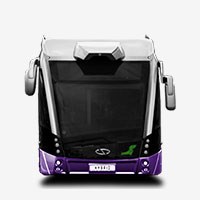 The MetroStyle vehicle family attracts attention with its futuristic design, which takes up latest trends in both the bus and tram industry. The front of the bus resembles Solaris trams. The design of the vehicle is also a reflection of its functionality. MetroStyle buses are built for busy routes, such as in Bus Rapid Transit systems. Therefore, the vehicle combines the best features of two means of public transport – the flexibility of a bus and the efficiency of a tram. MetroStyle can be equipped with various types of drives. Apart from Solaris’ full range of diesel-electric hybrid systems, they may be fitted with a traditional diesel engines or with eco-friendly solutions such as trolleybus technology.
The MetroStyle vehicle family attracts attention with its futuristic design, which takes up latest trends in both the bus and tram industry. The front of the bus resembles Solaris trams. The design of the vehicle is also a reflection of its functionality. MetroStyle buses are built for busy routes, such as in Bus Rapid Transit systems. Therefore, the vehicle combines the best features of two means of public transport – the flexibility of a bus and the efficiency of a tram. MetroStyle can be equipped with various types of drives. Apart from Solaris’ full range of diesel-electric hybrid systems, they may be fitted with a traditional diesel engines or with eco-friendly solutions such as trolleybus technology.
Special Vehicles
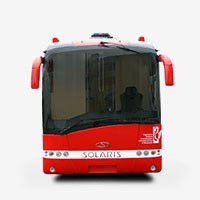 The construction of a special-purpose vehicle requires vast experience from the manufacturer. But this may not be sufficient if the client does not have full confidence in the development of a new tailor-made product. Solaris attaches great importance to special-purpose buses. The factory in Bolechowo has already manufactured several such models, including the a beauty parlour, buses adapted to the needs of the fire brigade or those carrying passengers at the airport from terminals to aircraft. However, the real speciality of Solaris are mobile blood donation stations, which are based on the Solaris Vacanza tourist coach. They are used by medical centres in many Polish cities, but have also been sold to the Latvian capital Riga. Solaris mobile blood donation stations directly reach people who want to donate blood, thereby further promoting the idea of honorary blood donation.
The construction of a special-purpose vehicle requires vast experience from the manufacturer. But this may not be sufficient if the client does not have full confidence in the development of a new tailor-made product. Solaris attaches great importance to special-purpose buses. The factory in Bolechowo has already manufactured several such models, including the a beauty parlour, buses adapted to the needs of the fire brigade or those carrying passengers at the airport from terminals to aircraft. However, the real speciality of Solaris are mobile blood donation stations, which are based on the Solaris Vacanza tourist coach. They are used by medical centres in many Polish cities, but have also been sold to the Latvian capital Riga. Solaris mobile blood donation stations directly reach people who want to donate blood, thereby further promoting the idea of honorary blood donation.




